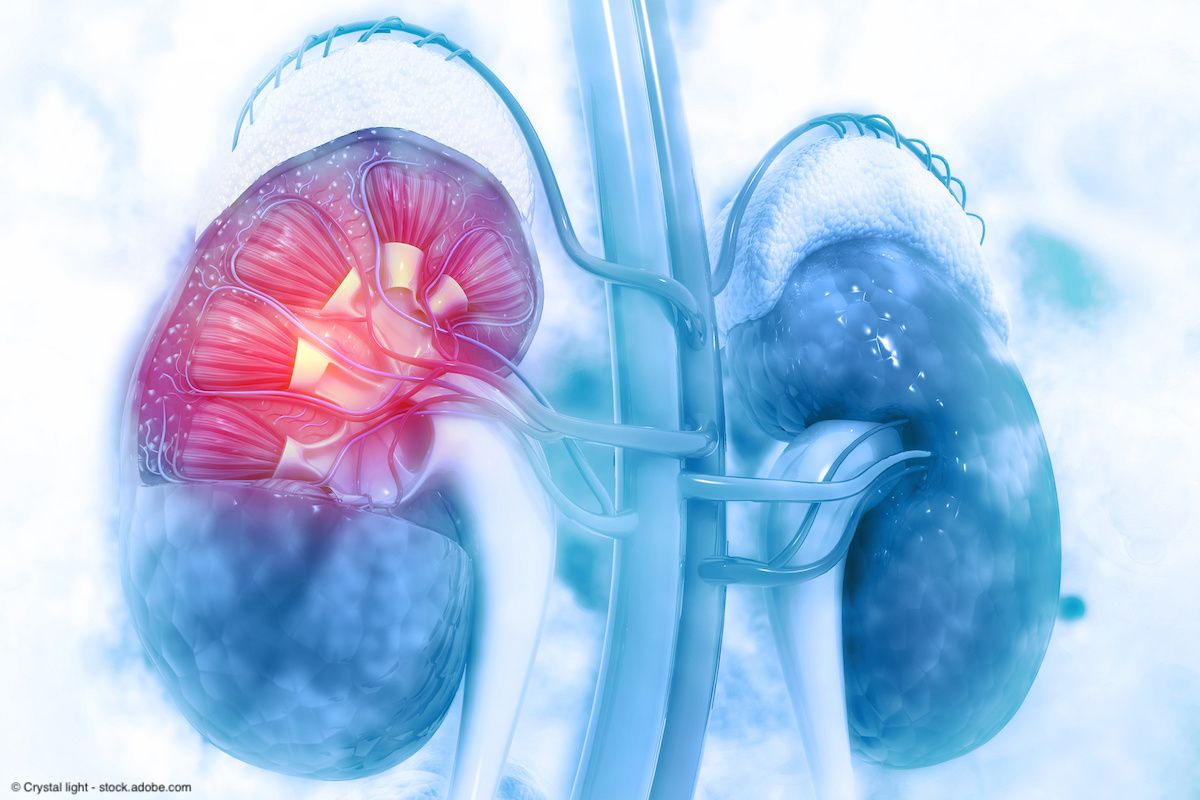News
Article
siRNA drug therapy shows promise in clear cell renal cell carcinoma
Author(s):
“ARO-HIF2’s ability to target cancer cells, disrupting a key tumor-driving mechanism, illustrates the potential of siRNA technology in oncology,” says James Brugarolas, MD, PhD.
ARO-HIF2, a tumor-directed short interfering RNA (siRNA) drug targeting HIF2α mRNA, demonstrated the ability to inhibit tumor growth in patients with advanced clear cell renal cell carcinoma (ccRCC), according to data from a phase 1 dose-escalation study (NCT04169711) published in Clinical Cancer Research.1
Comparisons of tumor biopsies from pre- and post-dosing demonstrated reductions in HIF2α, but the magnitude was variable.

The findings provide a proof of concept for treatment with tumor-directed siRNA in cancer.
“ARO-HIF2’s ability to target cancer cells, disrupting a key tumor-driving mechanism, illustrates the potential of siRNA technology in oncology,” said co-lead author James Brugarolas, MD, PhD, in a news release on the findings.2 Brugarolas is a professor of internal medicine in the division of hematology and oncology as well as the founding director of the Kidney Cancer Program at the Simmons Cancer Center at UT Southwestern Medical Center in Dallas, Texas.
Overall, data from the study showed a disease control rate of 38.5% (95% CI,20.2–59.4), and an objective response rate of 7.7% (95% CI,0.9–25.1) among all patients who received treatment with ARO-HIF2. Of those who achieved an objective response, no patients achieved a complete response, and 2 patients achieved a best overall response of partial response, comprised of 1 patient each in cohorts 2 (525 mg ARO-HIF2) and 3 (1050 mg ARO-HIF2).
Additionally, 30.8% of patients had stable disease at 8-week follow-up, with 15.4% maintaining stable disease at week 16. At week 8, 53.8% of patients had progressive disease.
Patients who achieved responses to therapy also concurrently demonstrated ARO-HIF2 uptake in tumor cells, HIF2α downregulation, and rapid suppression of tumor-produced erythropoietin in a patient with paraneoplastic polycythemia.
Comparisons of tumor biopsies from pre- and post-dosing demonstrated reductions in HIF2α, but the magnitude was variable. Within 48 hours, ARO-HIF2 was almost completely cleared from plasma circulation with minimal renal clearance across dose levels.
Regarding safety, treatment emergent adverse events (TEAEs) occurred in 96.2% of patients, with 38.5% of patients experiencing TEAEs of grade 3 or higher. Treatment-related TEAEs of grade 3 or higher were reported in 15.4% of patients. The most common TEAEs, irrespective of causality, were fatigue (50%), dizziness (26.9%), dyspnea (23.1%), and nausea (23.1%). Serious TEAEs were experienced by 4 patients (15.4%). AEs of special interest included neuropathy, hypoxia, and dyspnea.
A maximum tolerated dose for the study was not reached, nor was a definitive recommended phase 2 dose (RP2D) or optimal administration schedule.
Overall, the multi-center, open-label, phase 1 study sought to evaluate the safety, tolerability, and pharmacokinetics of ARo-HIF2 and establish a RP2D.
In total, the study included 26 patients with ccRCC and progressive disease following treatment with at least 2 prior therapies that included VEGF-directed therapy and immune checkpoint inhibitor therapy. Patients were enrolled across clinical trial sites in the US. For the study, ARO-HIF2 was administered to patients intravenously at the dose levels of 225 mg (cohort 1; n = 7), 525 mg (cohort 2; n = 10), and 1050 mg (cohort 3; n = 9) weekly for up to 2 years.
The primary end point for the study was TEAEs. Secondary outcome measures included the pharmacokinetics of ARO-HIF2, renal clearance, and overall response rate.3
Co-lead author Nizar M. Tannir, MD, professor of genitourinary medical oncology at MD Anderson Cancer Center in Houston, Texas, concluded in the news release,2 “These encouraging results pave the way for further research, highlighting a novel strategy in our fight against cancer.”
References
1. Brugarolas J, Obara G, Beckermann KE, et al. A first-in-human phase 1 study of a tumor-directed RNA-interference drug against HIF2α in patients with advanced clear cell renal cell carcinoma. Clin Cancer Res. 2024:OF1-OF10. doi:10.1158/1078-0432.CCR-23-3029
2. Drug targeting clear cell renal cell carcinoma shows promising approach. News release. UT Southwestern Medical Center. April 23, 2024. Accessed April 25, 2024. https://www.utsouthwestern.edu/newsroom/articles/year-2024/april-drug-targeting.html
3. Study of ARO-HIF2 in patients with advanced clear cell renal cell carcinoma. ClinicalTrials.gov. Last updated July 27, 2022. Accessed April 25, 2024. https://clinicaltrials.gov/study/NCT04169711
Newsletter
Stay current with the latest urology news and practice-changing insights — sign up now for the essential updates every urologist needs.
















